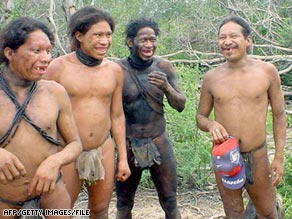Senior intelligence officers are lobbying the outgoing president to look after the men and women who could face charges for following his orders in the war on terrorism.
Many fear that Barack Obama, who has pledged to close the Guantanamo Bay detention camp and put an end to the policy of extraordinary rendition, could launch a legal witch hunt against those who oversaw the policies after he is sworn in on Jan 20.
Most vulnerable are US intelligence officers who took part in intensive interrogations against terrorist suspects, using techniques including water boarding, which many believe crossed the line into torture.
A former CIA officer familiar with the backstage lobbying for pardons, said: "These are the people President Bush asked to fight the war on terror for him. He gave them the green light to fight tough. The view of many in the intelligence community is that he should not leave them vulnerable to legal censure when he leaves.
"An effort is under way to get pre-emptive pardons. The White House has indicated that the matter is under consideration."
In addition to frontline CIA and military officers, others at risk could include David Addington, Dick Cheney's former counsel, and William Haynes, the former Pentagon general counsel who helped draw up the regulations governing enhanced interrogations.
Many in the Democratic party and human rights groups are calling on President-Elect Obama to tear up Mr Bush's executive orders licensing intensive interrogations on his first day in the Oval Office. They also want an immediate end to rendition, whereby suspects are flown to countries that practise torture.
But some in the intelligence community fear that an overhaul of the justice department could embolden those who would like a full-blown investigation of what went on at Guantanamo Bay, with charges to follow for those involved.
Presidents can issue pardons at their discretion and those granted the immunity of a pardon do not need to have been previously charged with a crime.
Granting pardons to spies who allegedly used torture would complicate the politics surrounding Mr Obama's moves to end aspects of the war on terror that are blamed for tarnishing America's international reputation.
In meetings over the last two weeks, Mr Obama has been briefed by US intelligence chiefs on the extreme danger posed by some terrorist suspects in the Guantanamo Bay camp. His advisers last week floated the idea that, while some will be released and some put on trial in normal courts, a third category of legal status may have to be created for the most dangerous - a move that met with howls of protest from civil liberties groups.
There are just 255 prisoners still held at the base on the island of Cuba, but they include the so-called "Dirty 30", bodyguards to Osama bin Laden captured during the early stages of the war in Afghanistan.
The ex-CIA official said: "The Bush people are trying to be helpful but this is the one thing that they are pushing hard on. They're saying, 'Don't rush into anything.' It's easy to say close the place, but what do you do with the detainees? There are some serious head cases in there."
Some conservatives argue that if Mr Bush were to issue pardons to protect those who took part in his administration's security regime, it would make it easier for the incoming administration to find out exactly what went on, the goal of many who want to prevent repetition of what they view as abuses.
The ex-CIA official said: "If you want people to tell the truth, the best way would be to give them legal guarantees. A pardon is not the only way you can do that, but if Bush does it, it will save Obama the political problem he would have if he offered people immunity later."
But critics say such a move would be a disgrace. James Ross, legal and policy director for Human Rights Watch, said: "It would be the first pre-emptive pardon in US history for war crimes. Such a pardon might seek to protect low-level government officials who relied on legally dubious Justice Department memos on interrogations.
"But it would also provide blanket immunity to senior administration officials who bear criminal responsibility for their role in drafting, orchestrating and implementing a US government torture programme."
Mr Bush has received around 3,000 requests for pardons and conservatives would like him to help Lewis "Scooter" Libby, Vice-President Dick Cheney's former chief of staff. He was found guilty of obstruction of justice for his role in leaking the name of a CIA officer, Valerie Plame. Mr Bush has already commuted Mr Libby's sentence.
Presidential pardons are always controversial, though Mr Bush has granted fewer than 200 so far, less than half of those handed out by Ronald Reagan. Bill Clinton issued 140 pardons on his last day in office alone. When Gerald Ford took over from Richard Nixon, he pardoned his predecessor, forgiving all federal crimes he may have committed during the Watergate scandal.
Andrew Johnson pardoned the soldiers of the Confederacy and Jimmy Carter did the same for Vietnam War draft dodgers.




